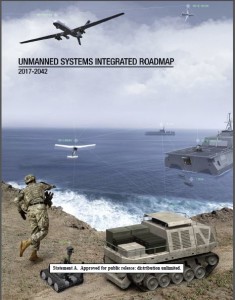
A new Defense Department report sketched out how it plans to increase the use of open architecture (OA) and modularity in unmanned systems over the next 25 years, starting by expanding its use in command and control and using more modular subsystems to approve platforms faster.The new 50-page report, Unmanned Systems Integrated Roadmap 2017-2042, charts the DoD’s unmanned systems strategy over the next 25 years. It was approved by Kevin Fabey, the assistant Secretary of Defense for Acquisition and Mary…

 By
By 









